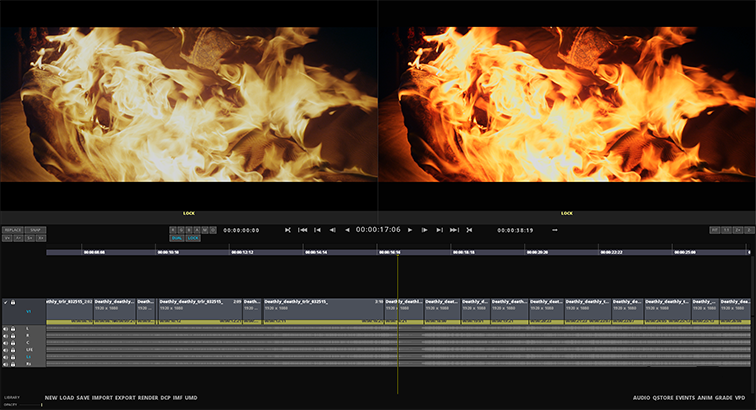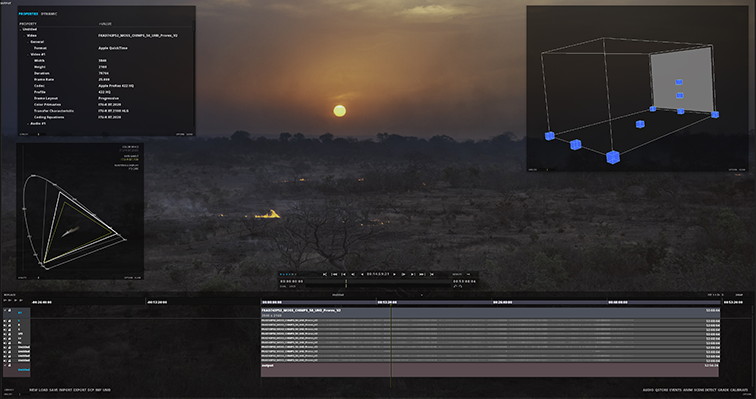Marquise Technologies at IBC 2019: a step-change for HDR and NGA content mastering, versioning and QC.
Amsterdam, September 12th 2019 – At IBC 2019 Marquise Technologies announces the release of mastering system MIST v5.0 and QC Player ICE v3.5.
These solutions for advanced management of high-end deliverables including ACES, HDR, Dolby Vision and Dolby Atmos have been upgraded with a new image processing pipeline, offering brand new workflow possibilities.
The dual viewport supports now two independent compositions, including DCP and IMF packages as source content. These multi-layers compositions carry unlimited soundfields as well as IAB tracks in both source and record. It is now possible to display multiple subtitle tracks simultaneously, including IMSC1.1, or to burn-in several languages for QC purpose.
The two compositions have independent outputs and can be displayed on distinct devices (dual 4K output). They are color-managed independently, permitting the comparison and the analysis of different versions: with or without tone mapping, stereo3d or not, HDR or SDR.
Another benefit of the new image processing pipeline is the sharp increase of performances in playback and rendering.

Continuing to lead the implementation of immersive audio, MIST and ICE integrates the Dolby Atmos Renderer, permitting the playback of DAMF, BWF ADM or IAB files as channel based audio outputs from 2.0 to 7.1.4.
All these formats can be imported as standalone files.
Immersive audio scopes and metadata inspector complete the QC toolset.
MIST enables also the export of Atmos formats for IMF App #2e and TSP 2121, as well as iTunes packages. It is also possible to export an Atmos down-mix into any supported deliverable.

Always at the forefront of latest IMF standards, Marquise Technologies products range support the newly published SMPTE TSP 2121-4, also known as JPEG2000 DPP. They also follow the recommendation DPP003 for the carriage of user metadata in SMPTE TSP 2121, used particularly when exporting a downstream package into an AMWA AS-11 file.
Demos at IBC will also illustrate new ways of working with componentized media like the CoMMA workflow, the integration of MIST and ICE with the media asset management solution CineCert’s Pakanu and the automated file based QC solution Venera Technologies’ Pulsar.
DCP and IMF management is not only intended for post-houses of broadcasters, but also in the perspective of archiving. Marquise Technologies hosts this year Filmfabriek, a scanner manufacturer, and together will demonstrate film to IMF transfers, showing the incredible workflow benefits of these format, permitting storage optimisation, versions management, content augmentation and tracking of technical and descriptive metadata.
Visit us at IBC on booth 7.D49
